Honey, we are killing the cat
🐈Blep 🐈Chimken 🐈Floofy little candyfloss cloud 🐈Chonky cat
These are all affectionate names for a cat who is overweight. Over time, society has glamorized the carrying of a few or a lot of extra pounds in our feline friends.
Why is a so-called chonky cat so cute?
It must be the way they walk, the way their belly wiggles, the way they roll around, the way they get crippling diseases, and a shortened life span. (The average lifespan for an overweight cat is just 10 years).
That took a turn for the worst and so will the life of a chonky cat if measures are not taken to rectify the situation.
Social media
Social media has a lot to answer for in the normalisation and celebration of overweight cats.
There are Instagram and Facebook groups dedicated to chonky cats. They have hundreds of thousands of followers and fat shaming is supposed to be strictly prohibited.
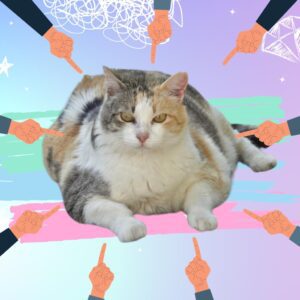
Interestingly, I checked out these pages.
In the comments, there was an overwhelming theme of concern. I had to actively scroll to find any words of encouragement or confirmation that this is a cute or acceptable state for a cat to find themselves in.
Cat owners know that we must protect our feline friends.
This begins by acknowledging that they are overweight and that it is dangerous. Perhaps the tide is turning as more light is shed on the consequences of obesity in cats.
An overweight or obese cat – the consequences
The plethora of potential health risks associated with an overweight cat are:
👉Kidney disease 👉Joint problems 👉Cancer 👉Hypertension 👉Heart disease 👉Skin disease 👉Blindness caused by high blood pressure 👉Respiritory disease 👉Osteoarthritis 👉Urinary tract disease 👉 Chronic inflammation 👉 Reproductive disease 👉Diabetes
How cute does a chonky cat sound now? Not as chonky as your vet bill will be that’s for certain.

How do I know if my cat is overweight or obese?
Good question!
There are some non-scientific ways to check if your cat might be overweight but a trip to the vet is the sure-fire way to get a definitive answer.
In the meantime, get at it with some non-invasive detective work using this scale from the Association for Pet Obesity Prevention:
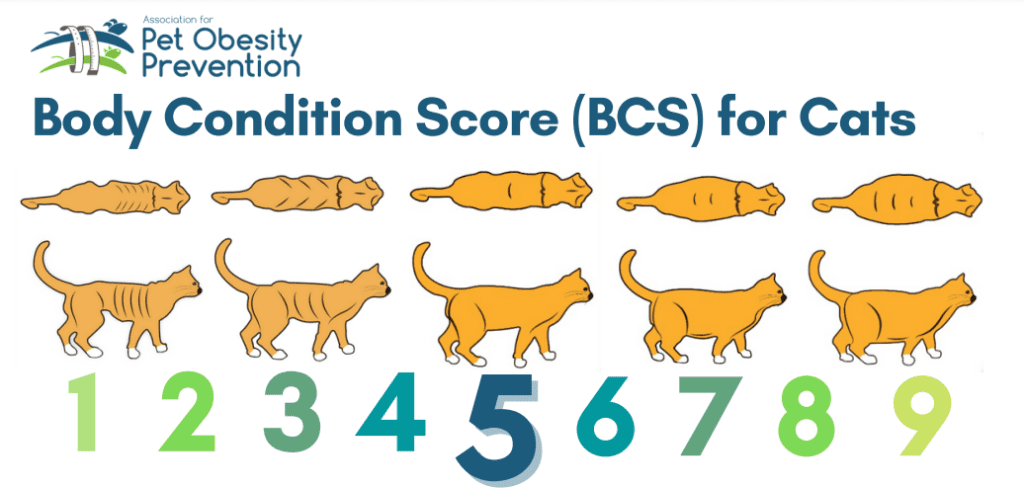
If your cat is an ideal weight they will look similar to the photos above number and the following will apply:
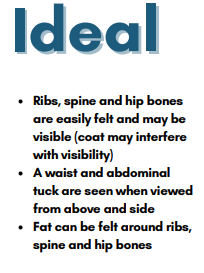
If your cat is thin or very thin they will look similar to the photos above 1 and 3 and the following will apply:
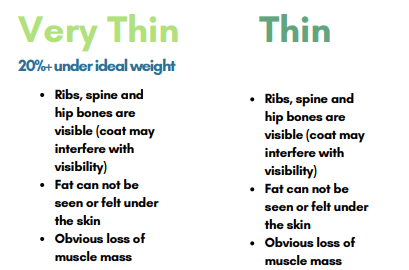
If your cat is overweight or obese they will look similar to the photos above 7 and 9 and the following will apply:
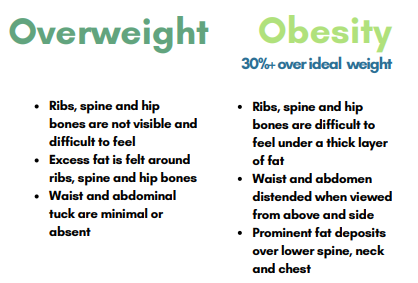
What can you do to help an overweight cat?
The first and most logical step is a trip to the vet to rule out any medical conditions. They can give you some advice on a personalised diet, nutrition, and a weight loss plan.
Along with following your vet’s tailored advice for your cat, here are some other pearls of wisdom to consider (Never override the advice of your vet who knows your kitty).
Diet
Multi-cat households
Make sure you are vigilant with each cat. 15-30 minutes after feeding scoop up all the cat bowls otherwise, it is going to be like leaving Augustus Gloop alone in the chocolate factory.
Avoid an automatic cat feeder in a multi-cat house unless you are monitoring the munching! Think Garfield, home alone with 4 lasagnes….all day. Grazing and free feeding are out of the window if you are serious about weight loss.
However, there is a solution if you do need an automatic feeder.
You can buy microchip feeding bowls. These will only open for the cat wearing the chip on their approach to avoid food thieves. Very good if you work shifts or are out for the day.
All cat households
If multiple people are feeding your cat or cats keep a chart of who has fed the cats when because they are con artists! Include treats on the list. Buy a whiteboard and just tick off the feeds.
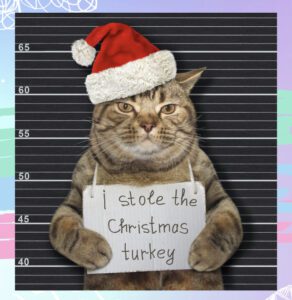
Once you have measured and allotted their food you could split it into 5 portions (if you are at home during the day). This can stop them from acting like they are being starved to death.
Don’t cut down on maintenance food without speaking to a vet first. Your cat needs a certain amount of nutrients every day and a sudden calorific cut can be dangerous.
Switch to low-calorie treats only and feed sparingly. Some good alternatives are:
🐔Chicken
🐟Lean fish
🥚Egg
Exercise
If you have a family then take it in turns and encourage the whole family to get behind the chonk makeover. They get their friend for longer and the responsibility is shared. Many hands make light work (or a light cat).
Cats sleep between 15 and 20 hours a day so when they are awake encourage exercise in the following ways:
Treat your cat to two 15-minute play sessions every day – some suggested toys are:
🐈Wands
🐈Puzzle toys
🐈Springs and balls
🐈Tunnels
🐈Track toys.
This is not only good for weight loss but your cat will also think you are a legend and this will strengthen your bond.
Put their food or treats in a feeding ball or scatter it around the house. This encourages them to hunt as they would in the wild.
If you have an indoor cat consider getting a catio and some shelves or climbing walls.
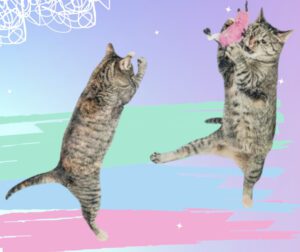
Cats are known for their attention span so be sure to rotate their toys to keep them interested.
Make your cat some DIY toys:
🐈A cardboard box with holes cut out
🐈Toilet rolls
🐈A large ball of tinfoil
🐈Pull some string along the floor
🐈Knit some pompoms
🐈Hang a cork on a piece of string.
If you do make homemade cat toys always supervise your cat when using them.
Monitoring
Weight loss should be controlled, gradual, and guided by experts so be patient. A healthy weight loss for an overweight cat is between 0.5 and 1 pound a month.
Monitor an overweight cat once a month (and all other cats at least once every 6 months).
The conclusion
Be compassionate with your cat and yourself; no self-respecting cat owner would deliberately put their kitty in harm’s way. The important thing is that you now have the knowledge and the power to help change their future.
Without further ado, pick up the phone and call the vet.
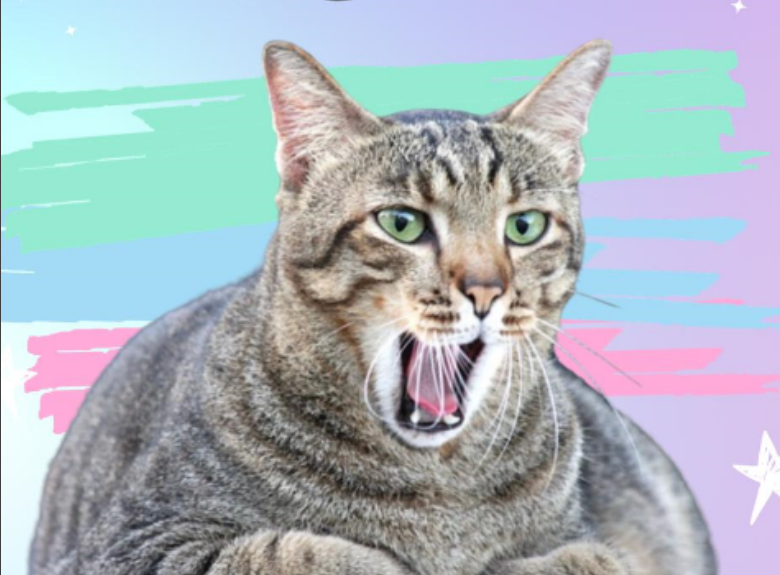

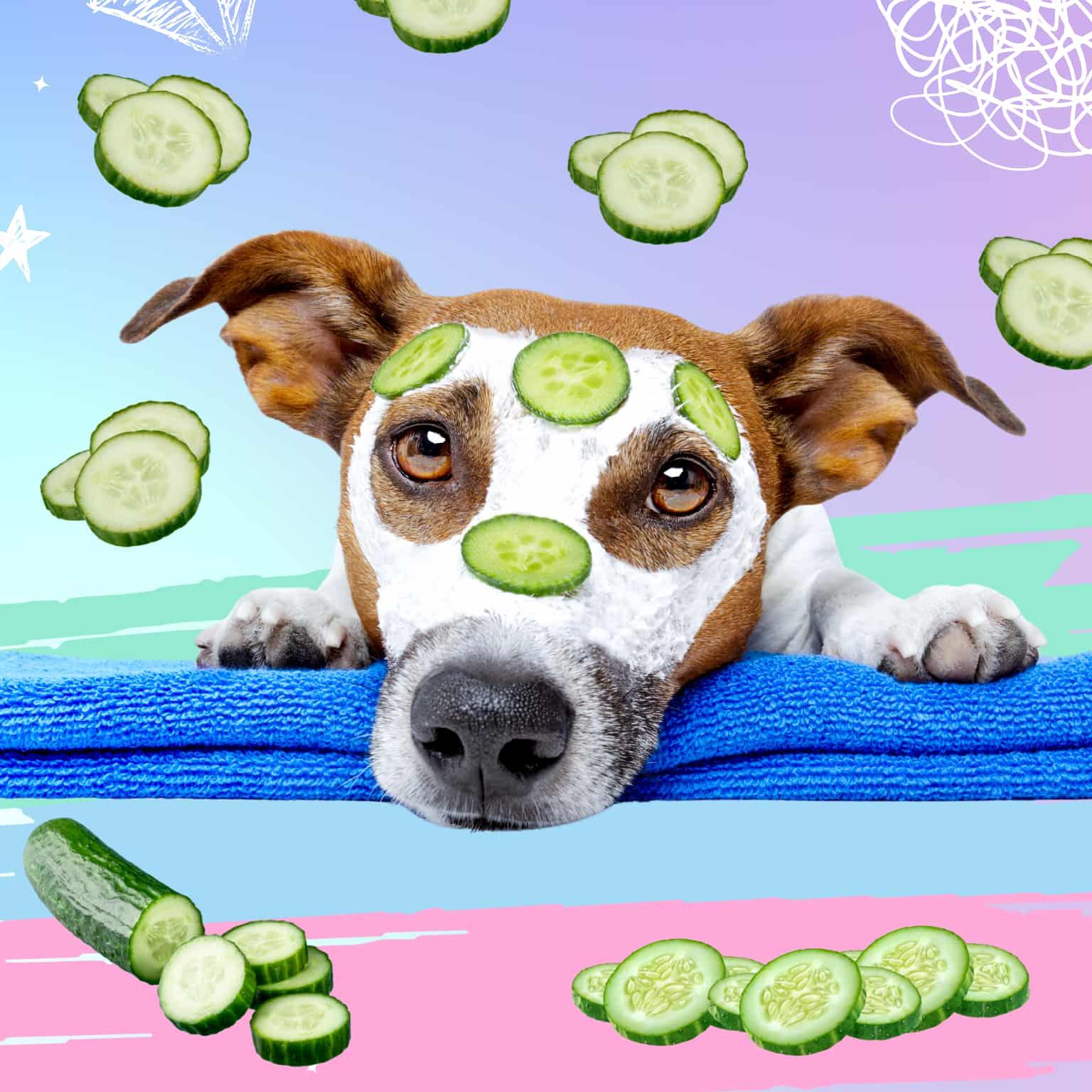

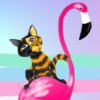
2 thoughts on “chonky cat – cat obesity and tips for weight loss”
I simply could not leave your website without expressing how much I appreciated the quality of the information you provided to your visitors. I anticipate returning frequently to read new postings.
That’s such a wonderful comment!! I appreciate you visiting and hope you enjoy any new articles. Do you have a cat?